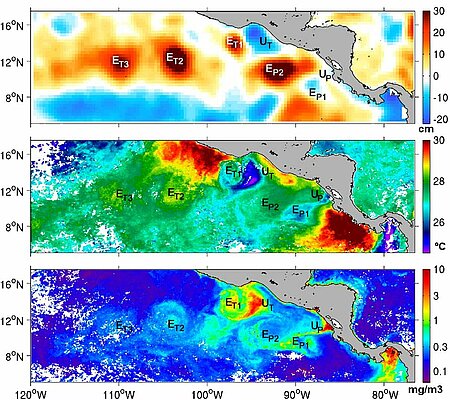Oceans are naturally complex. This creates a variety of habitats that marine organisms exploit throughout their life. Marine populations tend to aggregate for reproduction, feeding, protection, and migration. Their ability to perform these functions is dependent not only on cues from other organisms, but on features of their physical environment. Locations where organisms tend to concentrate regularly, or where there is high biological activity, are termed "biological hot spots". Because these areas feature high concentrations of organisms, including many species that are commercially exploited, they are often targeted for resource harvesting. Thus, biological hot spots must be an important facet of resource management and conservation efforts, including determining how to implement marine protected areas, refugia, and fishery closures
The Tehuantepec eddies can carry with them biological material far from the shores. Indeed, this region is one among those biological hot spots. It is a highly productive tropical ecosystem, which supports an industrial tuna fishery and other top predators, and is also the stage of the tuna-dolphin conservation issue.

See also
- Image of the Month:
- June 2006: Tehuantepec eddies.
- August 2006: Tehuantepec eddies: a multi-sensor's view on biology
- February 2005: Brazil-Malvinas Confluence region.
References
- Palacios, D.M., S.J. Bograd, D.G. Foley, F.B. Schwing, Oceanographic characteristics of biological hot spots in the North Pacific: A remote sensing perspective, Deep-Sea Research, 2006, doi:10.1016/j.dsr2.2006.03.004





